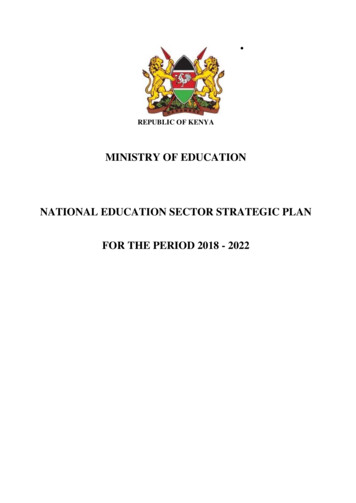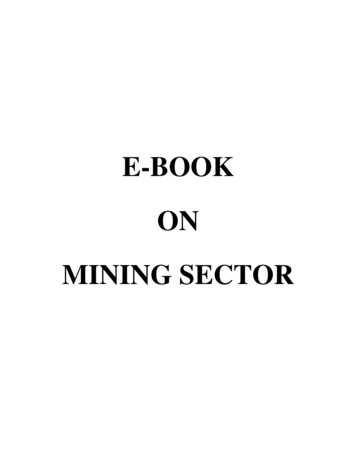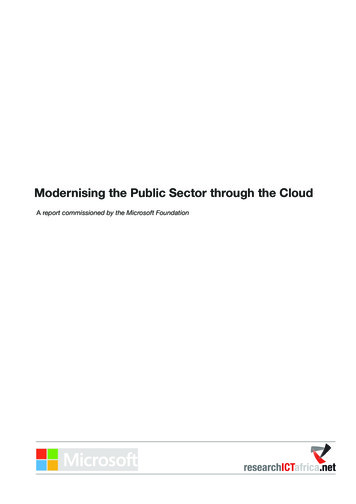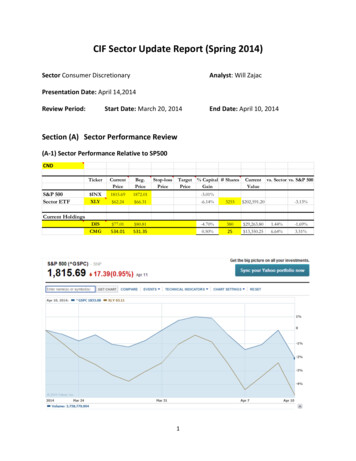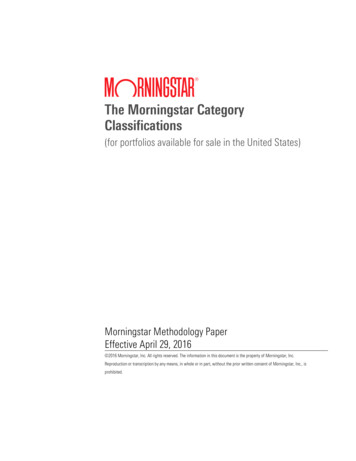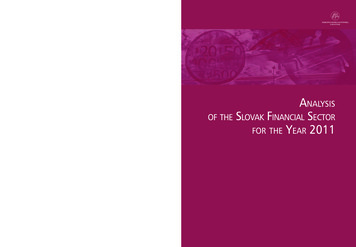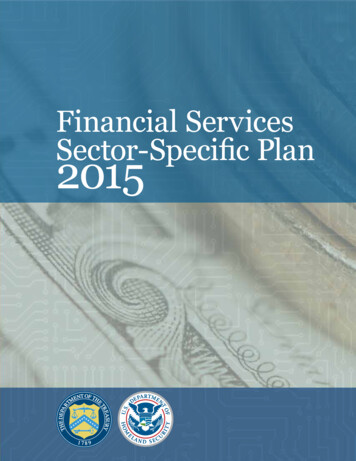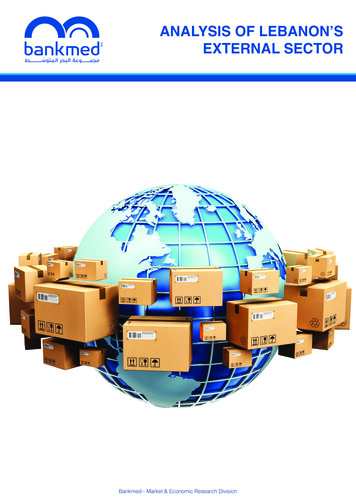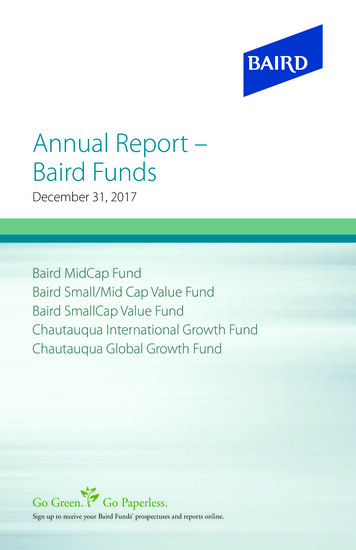
Transcription
BASIC EDUCATION SECTORANALYSIS REPORT- RWANDA -AUGUST 2012JAPAN INTERNATIONAL COOPERATION AGENCY (JICA)INTERNATIONAL DEVELOPMENT CENTER OF JAPAN INC. (IDCJ)HMJR12-082
BASIC EDUCATION SECTORANALYSIS REPORT- RWANDA -AUGUST 2012JAPAN INTERNATIONAL COOPERATION AGENCY (JICA)INTERNATIONAL DEVELOPMENT CENTER OF JAPAN INC. (IDCJ)
(Source: NISR, 2012)Map of Rwanda
AbbreviationsAfDB:African Development BankBTC:Belgium Technical CooperationCDRF:Capacity Development Results FrameworkCOE:College of EducationCPAF:Common Performance Assessment FrameworkCSEN:Children with Special Education NeedsDEO:District Education OfficerDEO:District Education OfficeDFID:Department for International DevelopmentDHS:Demographic and Health SurveyDoL:Division of LabourDP:Development partnerDPCG:Development Partners Cooperation GroupEAC:East African CommunityECD:Early Childhood DevelopmentEDPRS:Economic Development and Poverty Reduction StrategyEFA:Education for AllEICV:Household Living Conditions Survey or Enquête Intégrale sur les Conditions deVie des ménagesEGRA-EGMA:Early Grade Reading and Mathematics in RwandaELT:English Language TrainingEMIS:Education Management Information SystemESSP:Education Sector Strategic PlanFTI:Fast-Track InitiativeHIV:Human Immunodeficiency Virus/Acquired Immune Deficiency SyndromeGS:General SecondaryGDP:Gross Domestic ProductGER:Gross Enrolment RateGNI:Gross national incomeGPE:Gross Enrolment RateICT:Information and Communication TechnologyIDCJ:International Development Center of Japan Inc.INSET:In-Service Education of TeachersJICA:Japan International Cooperation AgencyJRES:Joint Review of the Education SectorKIE:Kigali Institute of EducationLARS:Learning Achievement in Rwandan SchoolsLTSFF:Long-Term Strategy and Financing Frameworki
MDGs:Millennium Development GoalMINALOC:Ministry of Local GovernmentMINECOFIN:Ministry of Finance and Economic PlanningMINEDUC:Ministry of EducationMTEF:Medium Term Expenditure FrameworkMoU:Memorandum of UnderstandingNCDC:National Curriculum Development CentreNER:Net Enrolment RateNISR:National Institute of Statistics of Rwanda9YBE:9 Years Basic EducationODA:Official Development AssistanceODI:Overseas Development InstituteOECD:Organisation for Economic Co-operation and DevelopmentPISA:Programme for International Student AssessmentPNA:Peace-building Needs and Impact AssessmentPRESET:Pre-Service TrainingPRSP:Poverty Reduction Strategy PaperPTA:Parent-Teacher AssociationREB:Rwanda Education BoardRWF:Rwandan OB:WBI:WFP:Savings and Credit CooperativeSouthern and Eastern Africa Consortium for Monitoring Education QualitySector Education OfficerProject for Strengthening Mathematics and Science in Secondary EducationSingle Project Implementation UnitSector Wide ApproachesTraining of trainersTeacher Training CollegeTeacher Service CommissionTechnical and Vocational Education and Training12 Years Basic EducationUnited Nations Assistance Mission for RwandaUnited Nations Development ProgrammeUnited Nations Children’s FundUnited Nations Population FundUnited States Agency for International DevelopmentVision 2020 Umurenge ProgrammeFlemish Association for Development Cooperation and Technical AssistanceWorld Bank InstituteWorld Food Programmeii
Executive SummaryChapter 1: Outline of the StudyAs the target year of the Millennium Development Goals (MDGs) and Education for All (EFA)approaches, non-traditional forms of aid modalities such as SWAps and general budget supportare progressively tested and used in providing aid. In this context, the Japan InternationalCooperation Agency (JICA) has commissioned a study to carry out a comprehensive andin-depth analysis of the education sector in 13 countries in Sub-Saharan Africa and LatinAmerica 1 so that more strategic and effective programs/projects can be formulated. Thepurpose of the study is twofold: 1) to gather relevant data and information, analyze them, and toidentify priorities in the education sector in each country, and 2) to propose how to improve thequality and the methodologies of JICA’s analysis on basic education.Chapter 2: Political and Socio-economic Situation in RwandaAfter the independence in 1962, Rwanda has suffered from repeated internal conflicts amonggroups of different ethnic and socio-economic backgrounds. In 1990, the Rwanda PatrioticFront (RPF), whose forces were primarily composed of Tutsi refugees in Uganda, invadedRwanda, which provoked a war with the Hutu regime led by the President Juvenal Habyarimana.In April, 1994, when the airplane of the President Habyarimana was shot down, it triggeredgenocide, in which, extreme Hutus massacring 800,000 to 1 million Tutsis and moderate Hutusduring the course of 3 months. In July, 1994, after the RPF ceased the genocide, a new politicalregime was established, with Paul Kagame as the Vice President. In August, 2003, a Presidentialelection was carried out and Paul Kagame was elected the President. Now, the PresidentKagame (re-elected in 2010) puts strong emphasis on the fight against corruption, and Rwandafairs well in terms of less corruptions and good security in the region. The recent economygrowth rate is maintained at around 7%.Chapter 3: Educational Policies and ReformsIn July, 2003, the Education Sector Policy was issued. In the Policy, the mission statement isdescribed as follows, “the global goal of the Government of Rwanda is to reduce poverty and inturn to improve the well-being of its population. Within this context, the aim of education is tocombat ignorance and illiteracy and to provide human resources useful for the socio-economicdevelopment of Rwanda through the education system”.When the Nine Years Basic Education policy (9YBE) was introduced in 2006, the free andcompulsory basic education was expanded from 6 years covering Primary 1 (P1) to Primary 6(P6) (school age 7 to 12 years old) to encompassing 9 years covering Primary 1 (P1) to Senior 31The target countries are Kenya, Ethiopia, Uganda, Rwanda, Malawi, Zambia, Cameroon, Senegal, Mali,Niger, Burkina Faso, Guatemala, and Nicaragua.iii
(S3) (school age 7 to 15 years old). The basic education was made free of charge in 2003/04 andthe free 9YBE was implemented from 2007. In 2012, basic education was extended to 12 years.During the presidential election campaign in 2010, President Paul Kagame, who were re-electedthe President, made a pledge to ensure the 12 Years Basic Education (12YBE) policy in Rwanda.According to the Economic Development and Poverty Reduction Strategy (EDPRS), the highlevel objectives for education are to improve and increase: 1) Access to education for all, 2)Quality education at all levels, 3) Equity in education at all levels, 4) Effective and efficienteducation system, 5) Science and technology and ICT in education, and 6) Promotion ofpositive values, critical thinking, Rwandan culture, peace, unity and reconciliation.Chapter 4: Status and Challenges of Basic Education Sector Development[Access] Since the launch of the Nine Year Basic Education Policy in 2006, expanding free andcompulsory education to 9 years, the enrollment rate from Primary 1 up to Senior 3 hasimproved remarkably. The primary national net enrollment rate improved from 73.3% in2000/01 to 95.9% in 2011. The gross enrollment rate of secondary education rose from 16.6% in2005 to 35.5% in 2011, marking slightly above the African average of 35.3%.[Internal Efficiency] Between 2000/1 and 2008, there were improvements made in terms ofpromotion rate, repetition rate, and dropout rate. Especially, the progress made in reducing theprimary repetition rate is significant. In primary education, repetition rate from P1 to P6 hasdropped from 17.7% in 2007, to 13.0% in 2010. In secondary education from S1 to S6, therepetition rate has decreased from 6.0% in 2008, to 3.8% in 2010. The secondary dropout ratehas also dropped from 9.6% in 2008, to 7.4% in 2010.[Equity] The Gender Parity Index, in 2006, for primary education was 1.00, for lowersecondary at 0.98, for upper secondary at 0.74, and for higher education at 0.67. The genderparity tends to deteriorate as students climb up the education ladder.[Learning Outcomes] Thanks to the improvements in reducing dropout rates, the completionrate for P1 to P6 has also ameliorated. The completion rate was 24.2% in 2000/01, and in 2010,rose up to 78.6%. The gender-disaggregated data show that 75.1% of boys and 81.8% of girlshave completed the primary education in 2010, girls outperforming boys. In order tosystematically assess and improve learning achievements, the Rwanda Government has startedto pilot initiatives to assess learning achievements with the support of development partners.The results of those initiatives show that still certain portions of students do not meet thelearning achievement criteria set out in Rwanda’s national curricula.[Learning Environment] In 2011, the national average of the number of pupils per classroom,for primary education is 81, and for secondary education, it is 42. As the enrollment rises tofully implement 9YBE and 12YBE, the construction of new classrooms are not catching up withthe pace to achieve the number of pupils per classroom coming down to 55 by 2015, a goal setby the Ministry of Education (MINEDUC). The regional statistics show that for primaryiv
education, the Eastern Province has the highest number of pupils per classroom (84) in 2011,followed by the Northern Province (83), the Southern Province (81), the Western Province (81)and the Kigali City (71). Annual teaching hours are calculated to be 900 hours with a singleshifting system, and 720 hours with a double shifting system. However, the basic infrastructurein school is still lacking. Access to safe drinking water has been improved, although the level ofelectrification is still low especially in the rural areas.[Textbook Distribution System] MINEDUC aims to distribute one textbook per pupil for thecore subjects in primary schools, and this is almost achieved. In secondary schools, this is notyet the case. In some science subjects, there is one textbook shared with two pupils, but insubjects such as history, this ratio is not being accomplished. Procurement and distribution oftextbooks have been decentralized, and this has been a good success. Presently, the DistrictEducation Office coordinates and schools themselves decide and purchase textbooks accordingto their specific pedagogical demands.[Curriculum] The Curriculum & Pedagogical Materials Department of the Rwanda EducationBoard (REB) carries out syllabus review every 3 to 4 years and curricula revision every 5 years.The curricula were revised to respond to the change of language of instruction from French toEnglish, and this process is almost completed. The Department also has a role to ensuretextbooks and reading materials related to the curricula are available for procurement byschools.[Teaching Staff] Due to the shortage of number of teachers and classrooms, double-shifting(and triple-shifting) is applied. There is a major improvement to be made in terms of the pupilteacher ratio. In lower secondary education, only 64.4% of teachers are qualified out of 13,206teachers. The quality of teachers also needs to be enhanced.Chapter 5: Public Finance and Administration in the Education SectorMINEDUC is the central organ for the administration of education in Rwanda. The localadministration of education is decentralized to the 30 District Education Offices (DEOs) locatedin the district administration offices headed by respective Mayors. The education sector isexperiencing a decentralization process since 2000, and more progressively since 2006. Sets ofduties and authorities of MINEDUC are being devolved to Districts, Sectors, schools, and tosome extent to communities. So far, the decentralization in the education sector has overallcontributed to improved delivery of services.MINEDUC is demonstrating strong ownership in policy formulation and its implementation inthe Sector. MINEDUC holds regular and open consultation processes with various stakeholdersincluding the development partners. The capacity of MINEDUC to coordinate inputs fromrelevant stakeholders is relatively high. According to Transparency International, the RwandanGovernment’s Corruption Perceptions Index is 5.0, ranking 49th out of 182 countries surveyed.This places Rwanda the 4th in ranking among 53 African countries.v
However, the capacities at District level are yet to be strengthened in terms of planning,monitoring, and financial management. It is also pointed out that there is a lack of internalauditing mechanism for budget execution at the District level. There is further need for capacitybuilding and training programmes for DEOs at District and Sector Education Officers (SEOs) atSector level.The percentage of total education spending of GDP has fluctuated between 3.7% and 4.1%between 2005 and 2008. However, when considering the spending out of government revenuesnet of grants, the allocation to the education sector has decreased since 1996. In 2009/10, thelargest portion of the education expenditure was allocated to primary education (39.4%)followed by lower secondary education and higher education. In 2009/10, 23% of the sources offunding came from donors.Chapter 6: Trends in Donor AssistanceIn 2006, a Memorandum of Understanding (MoU) was signed highlighting the criticalimportance of harmonization among donors. The Rwandan Government, especially, theMinistry of Finance and Economic Planning (MINECOFIN) emphasizes that general budgetsupport is the most preferred modality of assistance in Rwanda. However, at the same time, lineMinistries including MINEDUC also recognize the value of contributions by project-basedassistance. Projects are not eliminated as aid modality in Rwanda, and a donor providingproject-based assistance is also a signatory of MoU. For instance, JICA’s assistance is primarilyproject-based, and it is still designated as an active donor within the Division of Labour (DoL)framework.Chapter 7: Results of AnalysisIn comparison with basic education sectors in 10 other countries of Sub-Saharan Africa,Rwanda provides better access to primary education, though there are major improvements to bemade in terms of the repetition and dropout rates, pupil teacher ratio and access to secondaryeducation. As Rwanda does not take part in international or regional learning achievement tests,it is not possible to make comparisons with other countries in the region. However, the results ofLARS and EGRA & EGMA show that still a large portion of students do not meet some of thelearning achievement criteria set out in Rwanda’s national curricula. When comparingeducational indices of Rwanda and the EFA-FTI Educational Framework, the major problems ofRwanda are that: the pupil teacher ratio in basic education is high, dropout rates and repetitionrates are high, and annual hours of instruction are insufficient.The education sector in Rwanda has been experiencing series of reforms such as thedecentralization processes starting from 2000, the launch of nine year basic education in 2006,the initiation of the Nine Years Basic Education Implementation Fast Track Strategies in 2008,shift of medium of instruction from French to English, and eventually the reform to extend basiceducation to 12 years. Especially, the changes brought about by the shift of medium ofvi
instruction from French to English and the Nine Years Basic Education Implementation FastTrack Strategies, are posing schools and teachers to make substantial adjustments on the ground.The majority of teachers are educated in French, and their command of English language is notyet high. While aggressively pursuing new reforms in the education sector, it is important tomaintain the quality of education and to carefully manage the period of transition.Since early 2000s, the enrollment rates have improved steadily. However, the repetition ratesand the dropout rates are still relatively high. In order to improve internal efficiency, it isimportant to enhance the quality of education. There is a need to systematically analyze theunderlining causes of repetitions and dropouts, and take appropriate policy measures. In order toensure quality of education, it is important to strengthen the national system to measure learningachievement. In doing so, considerations should be made not to put undue emphasis onexamination marks only.The pupil-teacher ratio is high. This causes less contact time by teachers with the pupils. Withthe introduction of double-shifting, the average teaching hours for teachers are at 6.5 hours / day.The teaching hours are increasing, though the rate of salary rise is very little. Especially, inremote rural areas, the number of teachers is relatively low. This even makes the workload perteacher heavier. In primary education, due to the introduction of subject specialization instead ofclass based teaching, teachers may know less about each pupil, which could increasedisciplinary problems and adversely affect learning outcomes.Improvements are made in addressing gender disparities. For instance, under MDGs, the ratio ofgirls to boys in primary education is above 1. However, girls’ learning achievements arerelatively lower than those of boys in the grades of the national examinations. The dropout ratesare also higher for girls.In order to address these critical issues, out of the seven strategic priorities outlined in theEducation Sector Strategic Plan (ESSP) 2010-2015, the most critical issues observed for policyattention by this study are: 1) Improving completion and transition rates whilst reducing dropoutand repetition in basic education; 2) Developing a skilled and motivated teaching, training andlecturing workforce; 3) Ensuring equity within all fields and throughout all levels of educationand training, and 4) Strengthening the institutional framework and management capacity foreffective delivery of education services at all levels.The study has given rise to some points of considerations and has identified some of thechallenges in conducting a sectoral study in the education sector. The issues to note are withregard to: 1) Analysis of causal relationships of key performance indicators; 2) Responding tothe country specific and unique aspects within the country study; 3) The implication of conflictand peacebuilding; 4) The need to analyze the data below sub-national level for the study and 5)The importance of cross-sectoral perspective and analysis.vii
BASIC EDUCATION SECTOR ANALYSIS REPORT- RWANDA –Table of ContentsMapAbbreviationsExecutive SummaryCHAPTER 1: OUTLINE OF THE STUDY. 11.1BACKGROUND . 11.2OBJECTIVES OF THE STUDY . 11.3BASIC APPROACHES OF THE STUDY . 11.4TARGET AREAS/COUNTRIES . 21.5MAJOR STEPS AND SCHEDULE . 21.6STUDY TEAM. 3CHAPTER 2: POLITICAL AND SOCIO-ECONOMIC SITUATION IN RWANDA . 42.1POLITICAL SITUATION . 42.2SOCIO-ECONOMIC SITUATION . 4CHAPTER 3: EDUCATIONAL POLICIES AND REFORMS . 63.1NATIONAL DEVELOPMENT PLANS. 63.2EDUCATION ACT . 63.3EDUCATION POLICY . 73.4EDUCATION SYSTEM . 83.5EDUCATION SECTOR PLANS . 93.6SUPERVISORY AUTHORITY . 9CHAPTER 4: STATUS AND CHALLENGES OF BASIC EDUCATION SECTORDEVELOPMENT. 114.1ACCESS . 114.1.1School Age Population . 114.1.2Enrollment Trend of Pre-school Education . 114.1.3Enrollment Trend of Basic Education . 134.1.4Enrollment Trend of Secondary Education . 164.1.5Literacy Education . 174.2INTERNAL EFFICIENCY (QUANTITATIVE INTERNAL EFFICIENCY) . 184.3EQUITY . 214.3.1Comparative Analysis of Access by Group . 214.3.2Education for Children with Special Needs and Inclusive Education . 224.4QUALITY OF EDUCATION . 244.4.1Situation of Learning Outcome . 244.4.2Learning Environment . 28
4.4.3Procurement and Distribution of Teaching Material . 304.4.4Definition of Academic Ability . 304.4.5Quality Assurance System of Education . 314.4.6Curriculum . 324.4.7Languages of Instruction . 334.5TEACHERS . 344.5.1Teacher Qualification and Placement. 344.5.2Teacher Education System . 364.5.3Working Conditions for Teachers . 374.5.4Teacher Recruitment / Management . 38CHAPTER 5:PUBLIC FINANCE AND ADMINISTRATION IN THE EDUCATION SECTOR 405.1PUBLIC ADMINISTRATION . 405.1.1Decentralization of the Education Sector . 405.1.2Management Capacity of the Ministry of Education . 425.2EDUCATIONAL FINANCE . 455.2.1Budget of Education Sector . 455.2.2Flow and Administration of Funds Provided by Donors . 485.2.3Management System of Education Budget / Public Expenditure . 515.2.4Distribution of Grants . 515.2.5Private Education Expenditure . 525.2.6Unit Cost Analysis . 525.2.7Projection of Mid-term Demand for Teachers . 52CHAPTER 6: TRENDS IN DONOR ASSISTANCE . 536.1STRUCTURE OF DONOR COORDINATION . 536.2TRENDS OF COOPERATION BY EACH DONOR . 536.2.1Trends in Donor Assistance . 536.2.2Aid Volume and Content of Main Donors . 54CHAPTER 7:RESULTS OF ANALYSIS. 567.1TOP PRIORITIES IN THE BASIC EDUCATION SECTOR . 567.2FACTOR ANALYSIS OF TOP PRIORITIES . 577.3PRIORITIES OF RWANDA’S EDUCATION POLICY . 597.4CHALLENGES AND NECESSARY CONSIDERATIONS . 60Annex:Annex ISurvey Items and IndicatorsAnnex IIItinerary of the Field SurveyAnnex IIICollected DataAnnex IVReferences
CHAPTER 1: OUTLINE OF THE STUDY1.1BackgroundTo attain the goals of Education for All (EFA) and Millennium Development Goals (MDGs) bythe 2015 deadline, the developing countries have been engaged in quantitative and qualitativeimprovement in basic education in collaboration with the cooperating partners (CPs). For somedeveloping countries, reaching all of these goals by the target year still remains challenging. Inthe area of basic education improvement, sector-wide approaches (SWAps) have been moreemphasized through direct budget support rather than through project-type interventions. Therehave been growing concerns in the limited capacity of the developing countries in planning,budgeting, implementation, and monitoring and evaluation, which might negatively affect aideffectiveness and transparency.Japan International Cooperation Agency (JICA) has provided various project-type and/orprogram-type interventions, including technical assistance, classroom construction, educationequipment procurement etc., in line with the education sector program of the developingcountries. In order to implement more strategic and effective cooperation in this challengingenvironment, JICA has decided to conduct the Basic Education Sub-Sector Study (hereinafter,the Study) and to understand the whole picture of the basic education development to formulatemore comprehensive effective programs/projects based on the deepened analysis of theadministrative, financial and socio-economic contexts as well as of the educational indicatorsand statistics.1.2Objectives of the StudyThe Study, through data collection and analysis of the 13 target countries chosen from the SubSahara Africa and the Central America, and comprehensive and comparative analysis, aimed to(1) collect and analyze general information in the basic education sub-sector and identifypriority areas for development in target countries and (2) make recommendations for JICA todesign and carry out any future sector and/or sub-sector study.1.3Basic Approaches of the StudyThe Study was conducted with the following basic approaches:(1) Information gathering and analysis were to be done from the viewpoints of equity;administrative and financial capacity; and internal efficiency, in addition to quality andaccess of the basic education. Key questions, which were identified for each target countrythrough the preliminary document review, were also tackled to find updated information.(2) Problems and structural deficiencies of the basic education sector in each target countrywere to be identified and priority development needs and strategies were to be listed.(3) Recommendations for JICA to improve future sector study through comprehensive andcomparative analysis of the country analyses results.1
1.4Target Areas/CountriesThe following 13 countries were chosen as the target countries, where there were on-goingprograms/projects in the basic education sub-sector and program/project formulation was to beplanned in the near future.Sub-Saharan Africa(11 countries)Central America(2 countries)Burkina Faso, Cameroon, Ethiopia, Kenya, Malawi, Mali, Niger,Rwanda, Senegal, Uganda, and ZambiaGuatemala and NicaraguaThe field survey in Mali was cancelled due to the coup d’état in March 2012. Th
in-depth analysis of the education sector in 13 countries in Sub-Saharan Africa and Latin America1 so that more strategic and effective programs/projects can be formulated. The purpose of the study is twofold: 1) to gather relevant data and information, analyze them, and to
